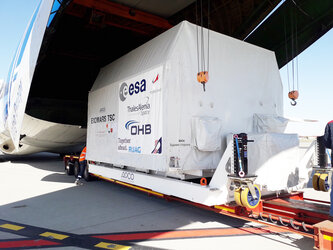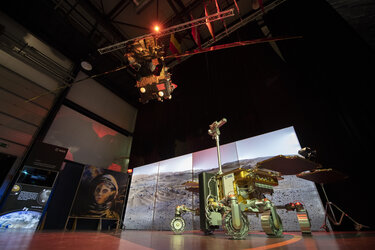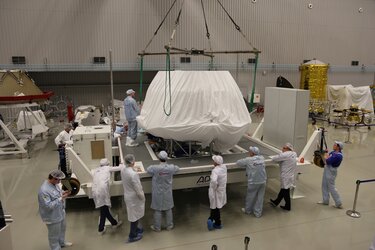

Destination Mars
DESTINATION MARS
Launched in 2003, ESA’s Mars Express mission has shown that liquid water once flowed on the Red Planet, altering its geology. Where there was water, there may have been life. ExoMars is exploring Mars from orbit and from the surface of the Red Planet. The ExoMars Trace Gas Orbiter is making a detailed inventory of the martian atmosphere. A second mission will deploy a European rover that will be the first to drill up to 2 m below the surface. It will search for signs of life underground, where it is better protected from the harsh radiation environment and it will retrieve samples for analysis in its laboratory. ESA and international partners are also planning a series of missions to bring Mars rocks back to Earth, the next step in the robotic exploration of Mars.
DESTINATION MARS
Efter opsendelsen i 2003 har ESA’s Mars Express-mission vist, at flydende vand engang flød på den røde planet og ændrede dens geologi. Hvor der var vand, kan der have været liv. ExoMars udforsker Mars fra kredsløb og fra overfladen af den røde planet. ExoMars Trace Gas Orbiter laver en detaljeret oversigt over den røde planets atmosfære. En anden mission vil sende en europæisk rover til Mars, der vil være den første til at bore op til 2 m under overfladen. Den vil søge efter tegn på liv under overfladen, hvor den er bedre beskyttet mod den hårde stråling, og den vil samle prøver til analyse i sit indbygget laboratorium. ESA og internationale partnere planlægger også en række missioner for at bringe Mars-prøver tilbage til Jorden, det næste skridt i den robotbaserede udforskning af Mars.





